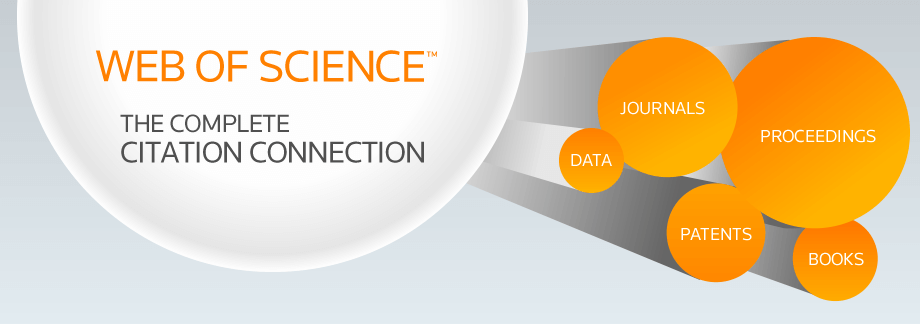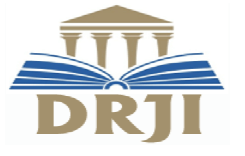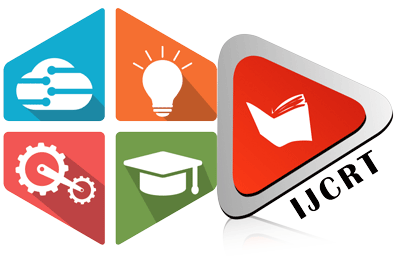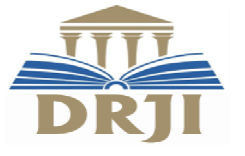INTERNATIONAL JOURNAL OF CREATIVE RESEARCH THOUGHTS - IJCRT (IJCRT.ORG)
International Peer Reviewed & Refereed Journals, Open Access Journal
IJCRT Peer-Reviewed (Refereed) Journal as Per New UGC Rules.
ISSN Approved Journal No: 2320-2882 | Impact factor: 7.97 | ESTD Year: 2013
Call For Paper - Volume 13 | Issue 12 | Month- December 2025
Scholarly open access journals, Peer-reviewed, and Refereed Journals, Impact factor 7.97 (Calculate by google scholar and Semantic Scholar | AI-Powered Research Tool) , Multidisciplinary, Monthly, Indexing in all major database & Metadata, Citation Generator, Digital Object Identifier(CrossRef DOI)
Contact Us Click Here
WhatsApp Contact Click Here
Volume 13 | Issue 7
| IJCRT Journal front page | IJCRT Journal Back Page |
Paper Title: Smart Parking System
Publisher Journal Name: IJCRT
Your Paper Publication Details:
Published Paper ID: - IJCRTBE02134
Register Paper ID - 289391
Title: SMART PARKING SYSTEM
Author Name(s): Maddela Bhargavi, Monika V, Poojitha J N, Rakshitha J, Lakshmi P
Publisher Journal name: IJCRT
Volume: 13
Issue: 7
Pages: 1051-1058
Year: July 2025
Downloads: 260
Abstract
Car parking is today a source of concern in city centers, and with escalating needs alongside a split, inadequate car park provision, one major negative outcome is the fact that road traffic becomes rather hard to handle, supported by the real congestion issues. They can result in inefficiencies as, for instance, massive levels of time wastage, plus greater consumption of fuel. Smart parking systems (SPS) can be described in terms of what they involve in offering innovative solutions through the application of contemporary technologies like sensors, Internet of Things (IoT) devices, and real-time data analytics to maximize the use of parking spaces. They are capable of providing pertinent, real-time information about parking availability to guide drivers into available spaces and enable payment processes. Furthermore, some intelligent parking systems incorporate dynamic pricing schemes, which calculate varying parking prices based on demand, hence reducing imbalances in occupancy levels among parking. This paper gives a general overview of intelligent parking systems, particularly their technological aspects and functionalities, and their impact on urban mobility. In addition, it emphasizes the advantages of the SPS such as traffic congestion reduction, environmental effects, and improvement in user experience. The uptake of smart parking systems is transforming urban parking management at a fast pace with efficient and sustainable strategies for congested cities.
Licence: creative commons attribution 4.0
License
Keywords
Smart Parking, IoT, AI, Real-Time Parking, Urban Mobility, Traffic Reduction, Autonomous Vehicles, Smart Cities, WSN
License
Paper Title: Secure Post Quantum Based Email System
Publisher Journal Name: IJCRT
Your Paper Publication Details:
Published Paper ID: - IJCRTBE02133
Register Paper ID - 289336
Title: SECURE POST QUANTUM BASED EMAIL SYSTEM
Author Name(s): Aneesh M, Dr. Karthik S, Nischal U, Sumukha S Kashyap
Publisher Journal name: IJCRT
Volume: 13
Issue: 7
Pages: 1037-1050
Year: July 2025
Downloads: 242
Abstract
Traditional cryptographic techniques, especially RSA and ECC, which are frequently employed in secure email systems, are seriously threatened by the quick development of quantum computing. We propose a Post-Quantum Secure Email System to solve this problem by including lattice-based cryptography, an encryption method that is impervious to quantum attacks. This system offers secure authentication, end-to-end encryption, and an effective structure for key management. By implementing NTRU and Kyber, secure email storage and retrieval is ensured, by reducing quantum vulnerabilities. A MongoDB-based storage solution combined with a Flask API enables real-time encrypted email processing. Performance evaluations show the system's storage overhead, encryption speed, and computing efficiency compared to traditional cryptographic methods. Its resistance to man-in-the-middle, brute-force, and quantum-enabled decryption assaults is validated by security analysis. In the quantum era, the proposed approach guarantees email secrecy and integrity over the long period.
Licence: creative commons attribution 4.0
License
Keywords
Performance tests measured encryption and decryption times, database query speeds, and system responsiveness under concurrent user loads, ensuring efficiency despite the higher processing cost of post-quantum cryptography. The system maintained an average email retrieval time of 50-70 ms, balancing security and usability.
License
Paper Title: ENHANCED VIDEO SUMMARIZATION WITH REAL-TIME OBJECT DETECTION AND TRACKING USING YOLOV3 AND DEEP SORT
Publisher Journal Name: IJCRT
Your Paper Publication Details:
Published Paper ID: - IJCRTBE02132
Register Paper ID - 289338
Title: ENHANCED VIDEO SUMMARIZATION WITH REAL-TIME OBJECT DETECTION AND TRACKING USING YOLOV3 AND DEEP SORT
Author Name(s): Sinchana C Poojari, Navyashree J, Siri M K, Nithyasree M, Kavita K Patil
Publisher Journal name: IJCRT
Volume: 13
Issue: 7
Pages: 1030-1036
Year: July 2025
Downloads: 200
Abstract
Video summarization is a fundamental task of computer vision and multimedia processing to condense lengthy videos into short representations without losing the valuable content and context. The study is founded on the use of object detection techniques in video summarization and relies on the capability of deep learning to automatically recognize and extract discriminative objects and events from video streams. Relying on the benefit of the latest object detection models and new summarization techniques, the study tries to enhance the efficiency and effectiveness of video summarization to allow users to quickly perceive the content and meaning of videos without the requirement of lengthy playback. The approach not only enhances video browsing and comprehension of content but also has its future areas of application in surveillance, video indexing, and content recommendation systems. Video summarization is a crucial element to successfully extract key moments from lengthy video recordings, reducing storage and processing costs, and enhancing the user experience. The work proposes a state-of-the-art video summarization technique founded on real-time object detection based on YOLOv3 and Deep SORT algorithms. Based on the fusion of the new approaches, the proposed method effectively extracts and tracks discriminative objects with improved efficiency, leading to informative and meaningful video summaries. Experimental results exhibit enhanced efficiency and accuracy compared to state-of-the-art summarization techniques, indicating the potentiality of the proposed methodology in its real-world applications like surveillance, sport analysis, and content generation.
Licence: creative commons attribution 4.0
License
Keywords
Video Summarization, Object Detection, Object Tracking, YOLOv3, Deep SORT, Real-Time Processing
License
Paper Title: A SURVEY ON INTRUSION DETECTION AND PREVENTION IN 5G NETWORK
Publisher Journal Name: IJCRT
Your Paper Publication Details:
Published Paper ID: - IJCRTBE02131
Register Paper ID - 289339
Title: A SURVEY ON INTRUSION DETECTION AND PREVENTION IN 5G NETWORK
Author Name(s): Abhilash L Bhat, Dr. Deepa S R
Publisher Journal name: IJCRT
Volume: 13
Issue: 7
Pages: 1021-1029
Year: July 2025
Downloads: 206
Abstract
The deployment of 5G networks introduces a new era of communication technologies, provides higher data speeds, reduction in latency and enhanced connectivity. However, these advancements also increase significant concerns regarding security, especially with the increased attack surface and complexity inherent in 5G's architecture. Intrusion Detection and Prevention Systems (IDPS) are essential for safeguarding 5G networks against malicious threats and ensuring the integrity and availability of services. This paper surveys the state-of-the-art techniques for detecting and preventing in 5G environments, including both traditional and modern approaches. We discuss the role of machine learning and artificial intelligence in enhancing the detection capabilities of IDPS, as well as the challenges posed by the dynamic, distributed nature of 5G networks. Additionally, we explore the integration of IDPS with emerging 5G technologies such as network slicing, edge computing, and the Internet of Things (IoT), highlighting the potential for more adaptive and scalable security solutions. The paper also reviews key issues like real-time processing, scalability, and the need for privacy-preserving methods in intrusion detection. Finally, we identify research gaps and propose directions for future work to enhance the resilience of 5G networks.
Licence: creative commons attribution 4.0
License
Keywords
5G Network, Intrusion Detection and Prevention Systems (IDPS), Network Security, Cybersecurity in 5G, Machine Learning (ML)
License
Paper Title: AGROPREDICT: A WEBSITE FOR INTELLIGENT FARMING WITH AI-POWERED PREDICTIONS AND RECOMMENDATIONS
Publisher Journal Name: IJCRT
Your Paper Publication Details:
Published Paper ID: - IJCRTBE02130
Register Paper ID - 289340
Title: AGROPREDICT: A WEBSITE FOR INTELLIGENT FARMING WITH AI-POWERED PREDICTIONS AND RECOMMENDATIONS
Author Name(s): Pasupula Sai Vikas, Burra Sathwik Goud, Matta Daniel, C. Sruthi, Dr. Mohan Dholvan
Publisher Journal name: IJCRT
Volume: 13
Issue: 7
Pages: 1011-1020
Year: July 2025
Downloads: 201
Abstract
AgroPredict operates as a platform focused on vital agricultural issues such as crop selection and nutrient adjustment and disease prevention that specifically benefits Indian agricultural industries. AgroPredict delivers recommendations for appropriate crop choice through its IoT sensor applications by analyzing authentic soil data with environmental conditions of specific regions. Plant diseases become detectable through image recognition systems which allow early disease identification then the same technology analyzes symptoms while inspecting soil nutrient level to determine proper fertilizers based on plant requirements. AgroPredict achieves accurate predictions through the combination of three ML algorithms that include Random Forest with Support Vector Machines (SVM) and Convolutional Neural Networks (CNN). Users can easily access the system using web and mobile interfaces because the system features intuitive functional design. Through data-driven information delivery AgroPredict helps farmers decrease financial losses and increase yields and adopts sustainable farming practices.
Licence: creative commons attribution 4.0
License
Keywords
artificial intelligence, crop prediction, fertilizer recommendation, IoT, machine learning, smart farming
License
Paper Title: AI BASED LOAN PROCESSING SYSTEM
Publisher Journal Name: IJCRT
Your Paper Publication Details:
Published Paper ID: - IJCRTBE02129
Register Paper ID - 289342
Title: AI BASED LOAN PROCESSING SYSTEM
Author Name(s): Dr.Sowbhagya M P, Dr. G T Raju
Publisher Journal name: IJCRT
Volume: 13
Issue: 7
Pages: 1004-1010
Year: July 2025
Downloads: 193
Abstract
The proposed loan application processing .system for rural areas is specifically designed to address the unique challenges faced by agricultural communities when seeking financial assistance. This system aims to overcome the obstacles inherent to rural settings, ensuring a seamless and effective process for securing crucial financial support. Tailored to the specific needs of rural users, the system commences with farmers initiating the application process through a user-friendly interface designed explicitly for their use. A paramount focus is placed on robust data storage and management, ensuring the secure preservation of loan application forms. Employing advanced missing data imputation techniques enhances the integrity of the datasets. The website design emphasizes user interfaces that are both intuitive and accessible, accommodating varying levels of technological literacy prevalent in rural settings. The assessment of loan eligibility is facilitated by the integration of a machine learning model, carefully considering factors pertinent to agricultural finance. deployed locally and integrated via APIs, ensuring adaptability to both local systems and external services. The workflow concludes with a transparent and streamlined loan approval or rejection process, accompanied by insightful financial recommendations for approved applicants. This holistic approach, merging technology, effective data management, and machine learning customized for rural contexts, aspires to diminish the financial inclusion gap in rural areas. Ultimately, the system endeavors to empower farmers, enabling them to secure essential financial resources for sustainable agricultural practices.
Licence: creative commons attribution 4.0
License
Keywords
Machine Learning, Loan, Data, Validation.
License
Paper Title: ETHICAL HACKING AND CYBERSECURITY POLICIES: EXPLORING SECURITY ISSUES AND ETHICAL HACKING METHODS IN INDIA
Publisher Journal Name: IJCRT
Your Paper Publication Details:
Published Paper ID: - IJCRTBE02128
Register Paper ID - 289343
Title: ETHICAL HACKING AND CYBERSECURITY POLICIES: EXPLORING SECURITY ISSUES AND ETHICAL HACKING METHODS IN INDIA
Author Name(s): Priyanka.M
Publisher Journal name: IJCRT
Volume: 13
Issue: 7
Pages: 996-1003
Year: July 2025
Downloads: 225
Abstract
This study highlights the importance of cybersecurity and ethical hacking in India by examining the various policies, tools, and methods. The focus revolves around the efficacy of legal structures and policies regarding the cybercrimes that are surfacing in India. Cybersecurity is essential in today's digital world, as it shields private information, sensitive data, and vital infrastructure from online attacks. The swift development of digital technologies in India has resulted in a rise in cybersecurity risks, jeopardizing the availability, confidentiality, and integrity of critical data. Ethical hacking has emerged as a crucial tool in identifying and mitigating these threats. Strong cybersecurity measures aid in preventing monetary, reputational, and even loss of life due to the increase in cyberattacks such as ransomware, malware, and phishing. This report highlights the security concerns and difficulties by examining the present status of cybersecurity regulations and ethical hacking techniques in India. Strong cybersecurity regulations, practical ethical hacking techniques, and awareness campaigns are necessary to counteract cyber threats, according to a thorough review of the literature and professional viewpoints.
Licence: creative commons attribution 4.0
License
Keywords
cybersecurity, cybercrime, ethical hacking, cybercrime in India, government policies on cybersecurity in India, data protection laws in India, cybercrimes in India
License
Paper Title: SMART FARMING USING MACHINE LEARNING: A CONCISE REVIEW
Publisher Journal Name: IJCRT
Your Paper Publication Details:
Published Paper ID: - IJCRTBE02127
Register Paper ID - 289346
Title: SMART FARMING USING MACHINE LEARNING: A CONCISE REVIEW
Author Name(s): Damera Saritha, Deepa. S.R
Publisher Journal name: IJCRT
Volume: 13
Issue: 7
Pages: 989-995
Year: July 2025
Downloads: 211
Abstract
Agriculture is the primary source of food for the global population. It provides essential nutrients and sustenance for billions of people worldwide. Without agriculture, there would be no reliable food supply, leading to hunger and malnutrition. Agriculture plays a significant role in the economy, source of Raw Materials, Biodiversity and Ecosystem Services etc. This paper explores the Real-World uses of Machine Learning (ML) in sustainable agriculture to confront the difficulties of a growing global population and climate change. With traditional methods suffering from reduced effectiveness due to changing climate patterns and rising food demands, ML offers a data-centric approach to revolutionize crop management. The study investigates ML algorithms such as neural networks, support vector machines, decision trees, and ensemble models to analyze key factors like soil quality, climate conditions, and past crop performance. The aim is to optimize crop selection for specific regions, resulting in higher yields and reduced environmental impact.
Licence: creative commons attribution 4.0
License
Keywords
Smart Farming, Crop Yield Prediction, Soil Fertility Assessment, Machine Learning, AI Applications, IoT Applications
License
Paper Title: ENHANCING CYBERBULLYING DETECTION WITH GEO-AWARE TRANSFORMERS AND DEEP LEARNING- A COMPREHENSIVE SURVEY
Publisher Journal Name: IJCRT
Your Paper Publication Details:
Published Paper ID: - IJCRTBE02126
Register Paper ID - 289347
Title: ENHANCING CYBERBULLYING DETECTION WITH GEO-AWARE TRANSFORMERS AND DEEP LEARNING- A COMPREHENSIVE SURVEY
Author Name(s): Sushma A, Dr Deepa S.R
Publisher Journal name: IJCRT
Volume: 13
Issue: 7
Pages: 979-988
Year: July 2025
Downloads: 186
Abstract
This paper aims to develop an advanced system that detects and maps cyberbullying incidents on social media using AI technologies. The system will leverage Transformer techniques to identify relevant patterns and contextual signals from social media posts, accurately spotting instances of cyberbullying. Teachers can use the system to identify and support students affected by online harassment. Policymakers can benefit from precise data on cyberbullying trends and locations, enabling informed decision-making and the development of robust policies to combat online abuse. Social media platforms can utilize this technology to monitor and mitigate cyberbullying incidents, ensuring a safer digital environment for users.
Licence: creative commons attribution 4.0
License
Keywords
Cyber bullying, BERT, FSSDL-CBDC, Deep learning, Machine learning, Transfer learning, CNN
License
Paper Title: A DIAGNOSIS OF COLON CANCER USING DEEP LEARNING ALGORITHM
Publisher Journal Name: IJCRT
Your Paper Publication Details:
Published Paper ID: - IJCRTBE02125
Register Paper ID - 289348
Title: A DIAGNOSIS OF COLON CANCER USING DEEP LEARNING ALGORITHM
Author Name(s): Raghuramegowda S M, Deepika B Y, Sandhyarani N G, Sahana D S, Sushmitha K U,Chandra Naik G
Publisher Journal name: IJCRT
Volume: 13
Issue: 7
Pages: 971-978
Year: July 2025
Downloads: 204
Abstract
Colonoscopy is essential for detecting colorectal cancer (CRC) and pre-cancerous polyps, allowing for timely intervention and better patient care. Nonetheless, the manual analysis of colonoscopy images can be slow and prone to human mistakes, which increases the likelihood of overlooking polyps or making incorrect diagnoses. This study examines the use of deep learning techniques to automate the detection and classification of polyps in colonoscopy images. By employing convolutional neural networks (CNNs) and sophisticated image processing methods, the research seeks to improve the accuracy, efficiency, and dependability of colonoscopy analysis, aiding healthcare providers in diagnosing conditions related to the colon. The focus of this work is on preparing colonoscopy images, isolating significant regions, and extracting important features to train a deep learning model for classification purposes. The suggested system framework combines the segmentation and classification models to differentiate between normal and abnormal colon tissues. The method has been evaluated using a thorough dataset of colonoscopy images, showing significant enhancements in detection accuracy compared to traditional methods.
Licence: creative commons attribution 4.0
License
Keywords
A DIAGNOSIS OF COLON CANCER USING DEEP LEARNING ALGORITHM
License
Paper Title: System and Method for Virtual Boundary Detection and Warning of Safety Zone Violations in Construction and Industrial Environments
Publisher Journal Name: IJCRT
Your Paper Publication Details:
Published Paper ID: - IJCRTBE02124
Register Paper ID - 289359
Title: SYSTEM AND METHOD FOR VIRTUAL BOUNDARY DETECTION AND WARNING OF SAFETY ZONE VIOLATIONS IN CONSTRUCTION AND INDUSTRIAL ENVIRONMENTS
Author Name(s): Sonia Maria D’Souza, Sahil Salhaj, Yashas M Shetty, Siddarth Srinivas, Vaibhav Vemani, Suraj Vijay
Publisher Journal name: IJCRT
Volume: 13
Issue: 7
Pages: 965-970
Year: July 2025
Downloads: 139
Abstract
Workplace safety, particularly in construction and industrial places, is a critical concern due to the high risks faced by the workers in the hazardous zones. To address these challenges, our study introduces a computer vision based system for virtual border identification and safety monitoring. Using real-time object detection algorithm YOLOv5, the system tracks human movements and monitors proximity to danger zones by overlaying virtual boundaries on live video streams. It instantly detects safety violations, triggering visual and audible alarms while notifying supervisors, and significantly reducing the chance of any accidents.
Licence: creative commons attribution 4.0
License
Keywords
Virtual Safety Zones, Computer Vision, YOLOv5, Real-Time Monitoring.
License
Paper Title: AUGMENTED REALITY-POWERED PLANT DISEASE DETECTION FOR SMART FARMING
Publisher Journal Name: IJCRT
Your Paper Publication Details:
Published Paper ID: - IJCRTBE02123
Register Paper ID - 289361
Title: AUGMENTED REALITY-POWERED PLANT DISEASE DETECTION FOR SMART FARMING
Author Name(s): Soundarya B, Sadasivuni Kuvalesh, Uravakonda Varshini, C Christlin Shanuja, Roopa B S
Publisher Journal name: IJCRT
Volume: 13
Issue: 7
Pages: 955-964
Year: July 2025
Downloads: 177
Abstract
Agriculture is the backbone of food security and economic stability, but crop diseases significantly impact yield and quality. Traditional disease detection methods often require expert intervention, making them time-consuming and inaccessible to many farmers. To address this challenge, this research proposes an Augmented Reality (AR)-Driven Disease Detection System for smarter farming. The system integrates computer vision, deep learning, and AR technology to provide real-time disease identification and treatment recommendations. The proposed framework utilizes image processing and convolutional neural networks (CNNs) to detect plant diseases from images captured by AR-enabled devices such as smartphones. The processed results are overlaid on the plant using AR visualization, allowing farmers to recognize affected areas and access treatment solutions instantly. Additionally, the system provides real-time recommendations, preventive measures, and expert consultation options, ensuring a proactive approach to disease management. By leveraging machine learning, real-time data processing, and AR-based visualization, this solution enhances precision farming, reduces dependency on chemical treatments, and improves crop health monitoring efficiency. Farmers receive immediate, visual feedback on their crops, highlighting potential disease symptoms through AR interfaces. Furthermore, the system facilitates teleconsulting features, enabling farmers to seek expert advice remotely. This approach not only reduces crop losses but also promotes sustainable agricultural practices by minimizing excessive chemical use and optimizing disease management strategies. Implementing this AI-driven smart farming technology aims to empower farmers, enhance decision-making, and contribute to a more efficient and resilient agricultural sector.
Licence: creative commons attribution 4.0
License
Keywords
Augmented Reality (AR), Disease Detection, Smart Farming, Precision Agriculture, Deep Learning, Computer Vision, Convolutional Neural Networks (CNNs), Real-time Monitoring, Image Processing, Sustainable Agriculture, AI- driven Farming, Smart Crop Management
License
Paper Title: FACE RECOGNITION BASED SMART ATTENDANCE SYSTEM
Publisher Journal Name: IJCRT
Your Paper Publication Details:
Published Paper ID: - IJCRTBE02122
Register Paper ID - 289363
Title: FACE RECOGNITION BASED SMART ATTENDANCE SYSTEM
Author Name(s): Shrish Srivastava, Nirmal Kumar Roy, Suraj Kumar, Dr Jagadisha.N
Publisher Journal name: IJCRT
Volume: 13
Issue: 7
Pages: 947-954
Year: July 2025
Downloads: 173
Abstract
Attendance management is a fundamental task in educational institutions and workplaces, but traditional methods, such as roll-calling or card- swapping, are prone to inefficiencies, inaccuracies, and time wastage. Keeping track of attendance the traditional way can often lead to mistakes and even manipulation. To solve this, our paper introduces a smarter approach--a Face Recognition-Based Attendance System. By using advanced computer vision and machine learning, this system makes attendance tracking more accurate, efficient, and hassle-free. The system utilizes OpenCV and dlib for detecting real-time face and recognition, enabling a seamless and contactless way to mark attendance. Our system uses the ResNet50 model to capture unique facial features, creating 128-dimensional embeddings to accurately match individuals with stored records. Attendance is securely logged in an SQLite database, and a simple Flask-based web interface makes it easy to access records anytime. By automating the process, this system removes the hassle of manual entry, reduces errors, and provides a reliable solution for schools, colleges, and workplaces. Additionally, the integration of Tkinter for the face registration interface ensures ease of use, while SQLite offers a reliable storage system. By implementing this solution, administrative workload is significantly reduced, accuracy is enhanced, and attendance management becomes more streamlined and efficient.
Licence: creative commons attribution 4.0
License
Keywords
Face Recognition, Smart Attendance System, Computer Vision, OpenCV, dlib, Face Detection , Flask Web Application, Tkinter GUI, Automation, Attendance Management System, Scalable Solution.
License
Paper Title: CHATGPT: An Ultimate Driving Companion: Systematic Review
Publisher Journal Name: IJCRT
Your Paper Publication Details:
Published Paper ID: - IJCRTBE02121
Register Paper ID - 289364
Title: CHATGPT: AN ULTIMATE DRIVING COMPANION: SYSTEMATIC REVIEW
Author Name(s): Ananya Sadanand Gowda, Mamatha G
Publisher Journal name: IJCRT
Volume: 13
Issue: 7
Pages: 939-946
Year: July 2025
Downloads: 152
Abstract
Human-machine collaboration presents persistent challenges in aligning human intent with machine comprehension and execution. Large Language Models (LLMs) offer promising solutions by leveraging advanced natural language processing capabilities to bridge this gap. This paper surveys a novel framework that integrates LLMs into a vehicle "Co-Pilot," enabling autonomous systems to interpret and execute driving tasks based on human commands and contextual information. The proposed framework incorporates a robust interaction workflow and a memory mechanism to systematically organize and retrieve task-relevant data. By dynamically selecting appropriate controllers and planning optimal trajectories, the Co-Pilot adapts its operations to fulfill user-defined goals while maintaining safety and efficiency. Simulation experiments demonstrate the framework's ability to understand natural language instructions, plan actions, and execute driving tasks effectively, highlighting both its practical viability and limitations. Furthermore, the study emphasizes the importance of real-time adaptability in addressing complex driving scenarios and explores the concept of human-machine hybrid intelligence. This work illustrates the potential of LLMs to revolutionize autonomous driving by enabling more intuitive and effective human-machine collaboration.
Licence: creative commons attribution 4.0
License
Keywords
Human-machine collaboration, Large Language Models (LLMs), Vehicle Co-Pilot, Human-machine interaction, Natural language understanding, Trajectory planning, Autonomous driving, Hybrid intelligence.
License
Paper Title: ENHANCING WOMEN'S SAFETY AND SECURITY THROUGH AI POWERED WEARABLES AND DEVICES
Publisher Journal Name: IJCRT
Your Paper Publication Details:
Published Paper ID: - IJCRTBE02120
Register Paper ID - 289365
Title: ENHANCING WOMEN'S SAFETY AND SECURITY THROUGH AI POWERED WEARABLES AND DEVICES
Author Name(s): Ushasri, B N Veerappa, Maheswari L Patil
Publisher Journal name: IJCRT
Volume: 13
Issue: 7
Pages: 932-938
Year: July 2025
Downloads: 147
Abstract
This paper presents a conceptual framework for a Women's Safety Protocol -- a proposed Python-based web application aimed at enhancing personal security through emergency alerts and real-time location tracking. By leveraging APIs such as Twilio and Geopy, the system is designed to discreetly notify emergency contacts when a user is in distress. Though still in the ideation stage, this proposal outlines the planned architecture, potential use of wearable integration, and future AI enhancements for emotional state detection. Future enhancement could involve AI-driven emotion detection using wearable devices. The app utilizes Geopy to track the user's location with up to 200-meter accuracy, ensuring swift response capabilities. In the event of an emergency, it notifies multiple trusted contacts simultaneously and requests the user to verify their safety using a secure passcode. If the passcode is not entered, the system escalates the alert automatically. Through the combination of real-time tracking, automated alerts, and a discreet, intuitive interface, the Women's Safety Protocol offers a reliable and effective solution for women to access help promptly--enhancing personal safety and enabling rapid assistance from friends, family, or authorities.
Licence: creative commons attribution 4.0
License
Keywords
In emergencies, real-time alerts and quick-response protocols, powered by the IoT, ensure women's safety by tracking location and enhancing security.
License
Paper Title: An Accurate Prediction of Used Car Price Using XGBoost Regressor in Comparison with Random Forest and Decision Tree Regressor
Publisher Journal Name: IJCRT
Your Paper Publication Details:
Published Paper ID: - IJCRTBE02119
Register Paper ID - 289366
Title: AN ACCURATE PREDICTION OF USED CAR PRICE USING XGBOOST REGRESSOR IN COMPARISON WITH RANDOM FOREST AND DECISION TREE REGRESSOR
Author Name(s): Prateek Kumar, Shiromani Kumar, Shivam Gupta, Santhosh Kumar C
Publisher Journal name: IJCRT
Volume: 13
Issue: 7
Pages: 925-931
Year: July 2025
Downloads: 164
Abstract
To predict the price of second-hand cars, we have implemented three approaches namely, XGBoost, Random Forest, and Decision Tree Regressors. The Kaggle sourced dataset is cleaned, feature selected and treated for outliers in order to improve the accuracy. To evaluate the performance of the model and for knowing which factors in the price affect, we use the R2 score and Metrics evaluation of the Scikit learn module available in Python. Therefore, XGBoost is likely to outperform the rest because it is more efficient. Thus, we build a simple to use web application where Users may input Automobile details and get the same time price estimates. Our project serves to help buyers and sellers use the data to accurately predict a second-hand car price.
Licence: creative commons attribution 4.0
License
Keywords
Random Forest, Decision Tree, XGBoost Regressor, Machine Learning, Car Price Prediction.
License
Paper Title: ChronoDetect: Predicting Age with Machine Learning
Publisher Journal Name: IJCRT
Your Paper Publication Details:
Published Paper ID: - IJCRTBE02118
Register Paper ID - 289368
Title: CHRONODETECT: PREDICTING AGE WITH MACHINE LEARNING
Author Name(s): Aditya Singh, Sahibpreet Singh, Yuvraj, Partik, Dr. Raghav Mehra
Publisher Journal name: IJCRT
Volume: 13
Issue: 7
Pages: 916-924
Year: July 2025
Downloads: 193
Abstract
Accurate age detection has emerged as a useful tool in a constantly growing digital environment, spanning sectors including identity verification, wellness, healthcare, and personalized services. Conventional age estimation techniques use static inputs, but new opportunities for data-driven, real-time estimation have been made possible by developments in machine learning and predictive analytics. By utilizing deep learning models with real-time processing, we aim to create a robust system that adapts to diverse datasets and varying environmental conditions. The proposed framework employs optimization techniques to enhance efficiency of the model, ensuring seamless integration into cloud-based platforms for scalable deployment. The proposed study also indulges in deployment of the age detection model as a Software-as-a-Service for various security-based applications, such as security in net-banking. Beyond technical implementation, this study addresses the ethical considerations surrounding age detection, emphasizing fairness, transparency, and data privacy. The results of this research contribute to the growing field of machine learning-driven security applications, providing more insights, and secure identity verification. Through this work, ChronoDetect aims to demonstrate how AI-driven age estimation can be both efficient and ethically responsible, paving the way for broader applications in digital security domains.
Licence: creative commons attribution 4.0
License
Keywords
Machine Learning, Predictive Analytics, Age Detection, Cloud Computing, Software-as-a-Service (SaaS), Net-Banking, Optimization Techniques, Real-time Processing, OpenCV, TensorFlow.
License
Paper Title: AI - DRIVEN AUTOMATED EXPENSE TRACKING: A TECHNOLOGICAL ADVANCEMENT IN FINANCIAL MANAGEMENT
Publisher Journal Name: IJCRT
Your Paper Publication Details:
Published Paper ID: - IJCRTBE02117
Register Paper ID - 289369
Title: AI - DRIVEN AUTOMATED EXPENSE TRACKING: A TECHNOLOGICAL ADVANCEMENT IN FINANCIAL MANAGEMENT
Author Name(s): Samarth R Hegde, Hrishikesh Gangatkar, Pradyumna V G, Hayavadana M B, Sudha M
Publisher Journal name: IJCRT
Volume: 13
Issue: 7
Pages: 908-915
Year: July 2025
Downloads: 184
Abstract
The main aim of this project is to develop and deploy an Expense Tracker application that enhances the management of finances through the utilization of advanced technologies. The application incorporates Optical Character Recognition to scan and extract information from invoices and receipts, along with a Large Language Model that classifies expenses into pre-defined categories. Using Flask for the frontend and Python for the backend, the project promises a smooth and friendly user interface. The OCR component employs sophisticated text recognition techniques to pull out transaction information from receipts, while the LLM categorizes transactions into typical expense categories such as food, utilities, and entertainment. Additionally, the app shows these categorized expenditures through interactive graphs and detailed transaction lists on the dashboard, offering users insightful information about their expenditures. This project showcases the successful integration of OCR and LLM technologies in actual applications, underlining the potential for automation of everyday financial work. The system seeks to enhance financial literacy and allow users to make knowledgeable choices, hence encouraging efficiency as well as access in managing expenses.
Licence: creative commons attribution 4.0
License
Keywords
Automated Expense Tracking, Optical Character Recognition (OCR), Machine Learning Algorithms, Financial Management, Expense Categorisation, Tesseract OCR, Spending Insights, Neural Networks (CNN, LSTM), Real- Time Expense Monitoring, Data Extraction
License
Paper Title: REPORTEASE: A MODERN REPORT GENERATION TOOL
Publisher Journal Name: IJCRT
Your Paper Publication Details:
Published Paper ID: - IJCRTBE02116
Register Paper ID - 289370
Title: REPORTEASE: A MODERN REPORT GENERATION TOOL
Author Name(s): Dr. Sunita Chalageri, Abhiram YS, Keerthika S, Gaana S, Dhruthi Umesh S
Publisher Journal name: IJCRT
Volume: 13
Issue: 7
Pages: 898-907
Year: July 2025
Downloads: 192
Abstract
This solution introduces a web-based report generation tool that streamlines academic writing by integrating advanced formatting and data management features. The user- friendly interface supports autoformatting, including standardized font sizes, justified content, and 1.5-line spacing, while offering seamless data input and session management with auto-save functionality. AWS integration ensures secure storage and processing, and the tool includes robust data management capabilities such as historical access to previously generated documents. This comprehensive solution aims to enhance student productivity and reduce stress associated with academic report creation by providing an efficient, reliable, and userfriendly platform that adheres to academic standards.
Licence: creative commons attribution 4.0
License
Keywords
Report Generation Tool, Web-Based Application, AWS Integration, Academic Support, Data Management, User-Friendly Interface, Document, Google AI Studio APIs
License
Paper Title: CRYPTOMINER PRO
Publisher Journal Name: IJCRT
Your Paper Publication Details:
Published Paper ID: - IJCRTBE02115
Register Paper ID - 289371
Title: CRYPTOMINER PRO
Author Name(s): Mrs.Ramya .R, Monika .D, Nagashree .A, Pooja .G, Sheethal .R
Publisher Journal name: IJCRT
Volume: 13
Issue: 7
Pages: 890-897
Year: July 2025
Downloads: 187
Abstract
The growing popularity of cryptocurrency has increased the need for accessible and efficient Bitcoin mining platforms. Traditional mining methods often involve high power consumption, costly hardware, and complex setups, making them unsuitable for individual users. This paper introduces cryptoMiner Pro, a lightweight Bitcoin mining solution that eliminates the need for specialized equipment. The platform emphasizes ease of use and energy efficiency, offering a clean and intuitive interface tailored for both novice and experienced users. Robust security measures are incorporated to safeguard user data and ensure secure transactions. Additionally, an integrated administrative module supports effective oversight of users and transactions. By simplifying the mining process, cryptoMiner Pro aims to democratize Bitcoin mining and make it more inclusive for a broader audience.
Licence: creative commons attribution 4.0
License
Keywords
Accessibility, Bitcoin Mining, Lightweight Mining Platform, Secure Transactions, Transaction Management, User Interface
License
About IJCRT
The International Journal of Creative Research Thoughts (IJCRT) aims to explore advances in research pertaining to applied, theoretical and experimental Technological studies. The goal is to promote scientific information interchange between researchers, developers, engineers, students, and practitioners working in and around the world.
Indexing In Google Scholar, ResearcherID Thomson Reuters, Mendeley : reference manager, Academia.edu, arXiv.org, Research Gate, CiteSeerX, DocStoc, ISSUU, Scribd, and many more International Journal of Creative Research Thoughts (IJCRT) ISSN: 2320-2882 | Impact Factor: 7.97 | 7.97 impact factor and ISSN Approved. Provide DOI and Hard copy of Certificate. Low Open Access Processing Charges. 1500 INR for Indian author & 55$ for foreign International author. Call For Paper (Volume 13 | Issue 12 | Month- December 2025)
December 2025
Volume 13 | Issue 12
Last Date :
31-Dec-2025
Submit Manuscript Online Impact Factor: 7.97 Review Results : Within 02-03 Days Paper Publication : Within 02-03 Days

ISSN: 2320-2882 Impact Factor: 7.97 and ISSN APPROVED Journal Starting Year (ESTD) : 2013

ISSN: 2320-2882 Impact Factor: 7.97 and ISSN APPROVED Journal Starting Year (ESTD) : 2013
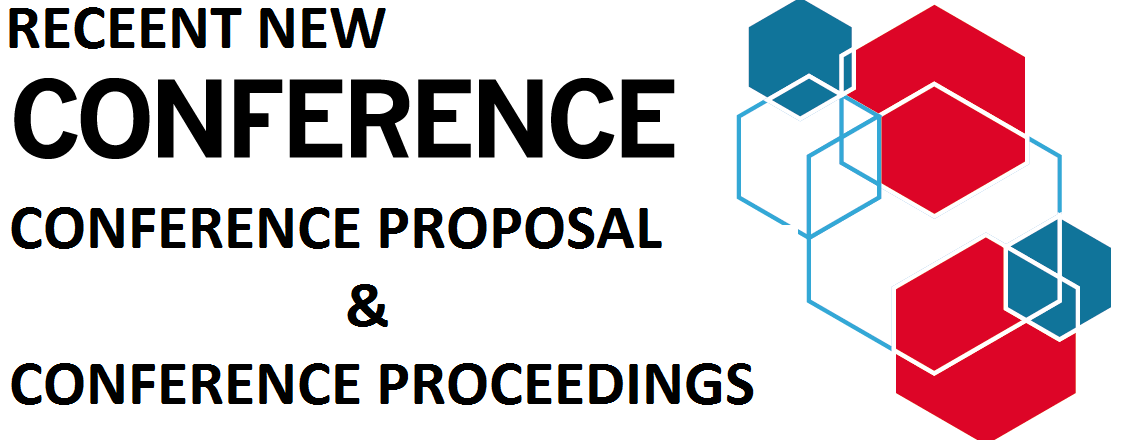
CONFERENCE PROPOSAL CONFERENCE PROCEEDINGS





